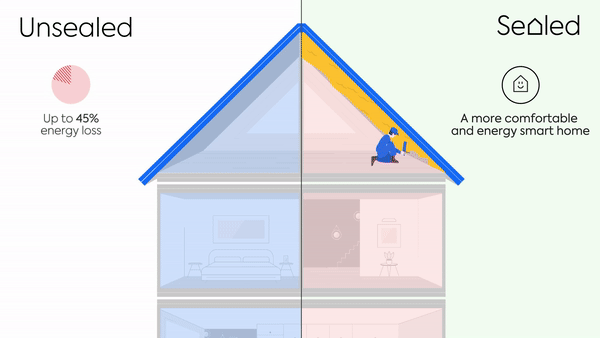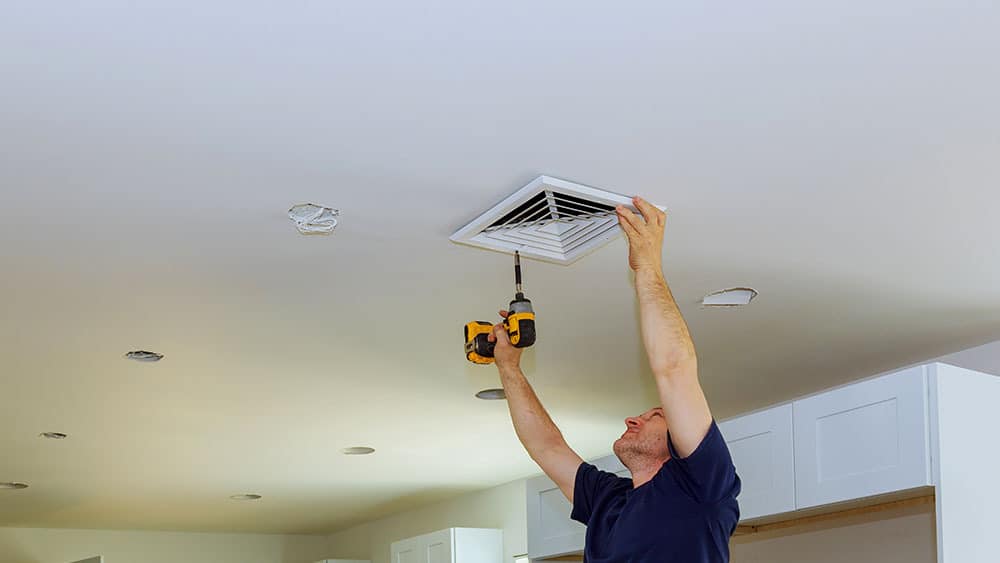Checking Out Cutting-edge Solutions for Ideal Home Air Flow Systems
Home air flow plays an important function in keeping health and convenience within living rooms. With advancements in innovation, cutting-edge solutions are emerging to maximize these systems. Smart ventilation, energy healing ventilators, and progressed purification are improving how air high quality is taken care of - Home Ventilation Melbourne. However, the integration of these modern technologies questions regarding their effectiveness and versatility in different home settings. What effects do these growths hold for future living criteria?
The Value of Home Air Flow for Wellness and Convenience
Frequently overlooked, home ventilation plays an important function in maintaining both health and convenience within household rooms. Appropriate ventilation is important for the flow of fresh air, which helps to dilute interior contaminants such as volatile natural substances, irritants, and odors. Without appropriate airflow, these impurities can collect, causing respiratory issues and other illness. Additionally, reliable air flow contributes to regulating moisture levels, avoiding mold development and architectural damage. By ensuring a well balanced exchange of air, locals can enjoy a much more pleasurable indoor atmosphere, enhancing total wellness. Appropriate ventilation can enhance power effectiveness by lowering the need for excessive heating or cooling, eventually resulting in reduced energy bills and a more sustainable living area.
Smart Ventilation Equipments: Harnessing Technology for Efficiency
Smart ventilation systems represent a substantial advancement in home air administration, leveraging IoT combination for enhanced control. These systems not only advertise power performance yet additionally offer remote monitoring capabilities, allowing users to optimize their indoor environments perfectly. By taking advantage of innovation, home owners can attain better air top quality while lowering power usage.
IoT Combination Benefits
Exactly how can IoT combination transform standard ventilation systems into highly efficient wise services? By integrating Internet of Things (IoT) technology, ventilation systems can achieve real-time tracking and control, enhancing their operational performance. Sensing units placed throughout a home collect data on air temperature, quality, and moisture, permitting automated changes based on current problems. This immediate responsiveness leads to enhanced indoor air top quality and convenience levels. Additionally, IoT-enabled systems can interact with other clever home gadgets, developing a natural ecological community that enhances power use. Users can additionally gain access to and handle their ventilation systems from another location by means of smartphones, supplying benefit and raised control. In general, IoT assimilation represents a significant advancement, bringing knowledge and adaptability to typical ventilation techniques.
Energy Effectiveness Features
As power effectiveness becomes a critical focus in modern-day home design, progressed air flow systems provide cutting-edge functions that substantially decrease power intake. These smart ventilation systems make use of sensing units to keep an eye on interior air high quality, moisture, and temperature level degrees, automatically adjusting air flow to keep perfect problems. By using power recuperation ventilators (ERVs), they capture and reuse energy from outbound air, lessening heating and cooling demands. Variable speed fans even more enhance effectiveness by changing their operation based on real-time requirements, avoiding unnecessary energy waste - Home Ventilation Melbourne. Additionally, programmable timers and occupancy sensors guarantee that ventilation runs just when essential, contributing to reduced energy costs. Jointly, these attributes stand for a substantial innovation in developing energy-efficient and sustainable living atmospheres
Remote Monitoring Capabilities
What advantages do remote monitoring capabilities offer modern-day home air flow systems? These abilities allow homeowners to track indoor air top quality and system efficiency in genuine time, enhancing total performance. By supplying data on air, temperature, and humidity contaminants, wise ventilation systems make it possible for aggressive modifications, making sure suitable conditions. Additionally, remote surveillance promotes maintenance alerts, recognizing prospective concerns before they escalate, consequently decreasing repair expenses and downtime. Users can access system analytics via mobile applications, enabling hassle-free control even when away from home. This technological integration not only promotes power effectiveness yet likewise adds to a healthier living setting. Eventually, remote surveillance capabilities stand for a considerable advancement in home air flow, straightening with the growing need for clever home innovations.
Power Recovery Ventilators: Optimizing Power Savings
Power recuperation ventilators (ERVs) play a vital duty in improving home power performance with reliable heat exchange. By transferring thermal energy in between outbound and inbound air, these systems noticeably reduce overall power intake. This innovative method not only keeps indoor air high quality yet additionally adds to reduce utility costs.
Effectiveness of Warm Exchange
While keeping interior air top quality is essential for health and wellness and convenience, the performance of warmth exchange in power recovery ventilators (ERVs) plays an important duty in making best use of energy savings. The primary feature of an ERV is to move warmth and dampness in between outgoing and incoming jet stream, which maximizes interior problems while decreasing power loss. High-efficiency warm exchangers can substantially minimize the tons on home heating and cooling systems by reclaiming energy that would otherwise be wasted. The effectiveness of these systems is typically determined by their core temperature exchange rates, which can vary based on layout and products utilized. By concentrating on sophisticated heat exchange technologies, property owners can enhance their ventilation systems, bring about boosted power effectiveness and price decreases with time.
Minimized Energy Consumption
Lowering energy intake is an essential advantage of power healing ventilators (ERVs), as they efficiently reuse thermal energy from exhausted air. By transferring heat in between incoming and outgoing jet stream, ERVs lessen the need for added home heating or cooling, bring about considerable power cost savings. This process not just reduces energy expenses yet likewise lessens the ecological impact connected with higher power usage. Additionally, ERVs maintain regular indoor air high quality without compromising thermal convenience, creating a balanced living setting. By integrating ERVs into home ventilation systems, homeowners can attain greater power performance, allowing a lasting method to interior air management while taking advantage of reduced energy expenses. Inevitably, ERVs represent a compelling option for energy-conscious customers.
Advanced Filtering Technologies for Cleanser Indoor Air
As interior air quality ends up being significantly recognized as an essential component of health and wellness and health, progressed filtration innovations are arising as important tools for ensuring cleaner settings. These technologies consist of high-efficiency particulate air (HEPA) filters, triggered carbon filters, and electrostatic precipitators, each created to properly capture airborne contaminants, irritants, and unpredictable natural substances (VOCs) HEPA filters can catch particles as small as 0.3 microns, significantly minimizing allergens like dirt termites and family pet dander. Turned on carbon filters succeed in adsorbing smells and chemical vapors, adding to a fresher interior environment. Additionally, electrostatic precipitators utilize electrical charges to remove particles, offering an energy-efficient alternative. By integrating these advanced filtration systems, home owners can enhance interior air top quality and advertise healthier living areas.
The Role of Sensors in Maximizing Air Flow and High Quality
Exactly how can sensors transform the monitoring of see interior air high quality? Sensors play a vital role in improving airflow and boosting interior atmospheres. By continuously monitoring variables such as moisture, temperature, and levels of pollutants, they give real-time information that informs air flow systems. This info allows automated modifications to airflow, ensuring ample flow and reducing the build-up of pollutants. Additionally, progressed sensors can identify certain air quality concerns, triggering prompt reactions to boost comfort and wellness. The combination of these devices right into air flow systems enables for a more effective and receptive administration approach, lowering energy intake while maintaining suitable air quality. Eventually, sensors function as a crucial part in creating much healthier interior spaces with specific airflow guideline.
Integrating Air Flow With Smart Home Systems
While lots of home owners seek comfort and performance, integrating ventilation systems with wise home modern technology provides an ingenious service to taking care of interior air quality. By linking air flow devices to clever home hubs, citizens can automate air quality monitoring and control air flow based on real-time data. These systems can reply to adjustments in toxin, moisture, and temperature level degrees, making sure excellent interior problems. Smart thermostats can function in tandem with ventilation systems to boost power performance, reducing costs while maintaining convenience. Home owners can also remotely control their ventilation settings via mobile applications, giving adaptability and assurance. Inevitably, this assimilation not just streamlines monitoring however considerably enhances the general living atmosphere, making it a useful enhancement to contemporary homes.
Future Trends in Home Ventilation Solutions
Arising innovations and heightened awareness of indoor air top quality are forming the future of home ventilation solutions. One substantial fad is the assimilation of expert system, enabling systems to view readjust air flow based on real-time information and occupancy patterns. Furthermore, power recuperation ventilators are acquiring grip, offering reliable air exchange while lessening energy loss. The usage of environment-friendly materials and layouts is also growing, lining up with sustainability goals. Smart sensing units that keep track of toxins and humidity degrees are ending up being standard, enabling property owners to keep optimal indoor atmospheres. Modular and scalable systems are arising, offering personalized choices for numerous home sizes and setups. With each other, these developments assure to enhance comfort, performance, and health in property spaces
Often Asked Inquiries
How Typically Should I Tidy My Home Ventilation System?

The frequency of cleaning up a home ventilation system varies based upon use and setting. Generally, it is suggested to clean up the system every 3 to six months to preserve excellent air quality and system efficiency.
Can Poor Ventilation Cause Mold And Mildew Development Inside?

What Are the Signs of Inadequate Home Ventilation?
Indications of poor home air flow include persistent odors, increased humidity levels, condensation on windows, visible mold growth, and a basic sensation of stodginess. These indications commonly recommend that air circulation is inadequate for keeping a healthy and balanced indoor environment.
How Can I Enhance Ventilation in Older Homes?
To boost air flow in older homes, one could consider installing exhaust fans, using natural air flow with windows, sealing spaces for much better air control, and integrating air purifiers to improve indoor air quality efficiently.
Are DIY Ventilation Solutions Effective and Safe?

Smart ventilation, power healing ventilators, and advanced filtering are reshaping how air quality is managed. As energy efficiency comes to be an important emphasis in contemporary home style, advanced ventilation systems offer cutting-edge attributes that substantially lower power intake. By incorporating ERVs right into home ventilation systems, property owners can accomplish greater power performance, making it possible for a lasting technique to interior air administration while benefiting from lower power expenses. The combination of these devices into air flow systems next permits for a more receptive and effective monitoring technique, decreasing power intake while preserving optimal air top quality. While lots of property owners seek comfort and efficiency, incorporating ventilation systems with smart home modern technology uses an ingenious option to handling interior air high quality.